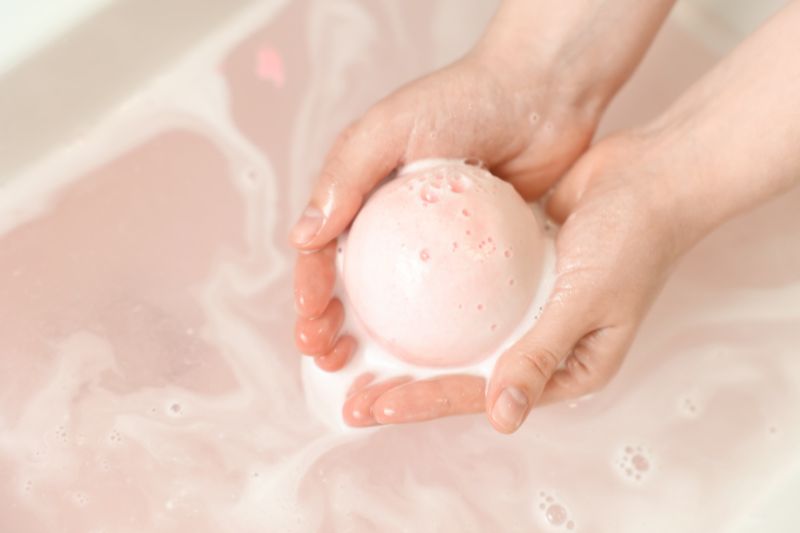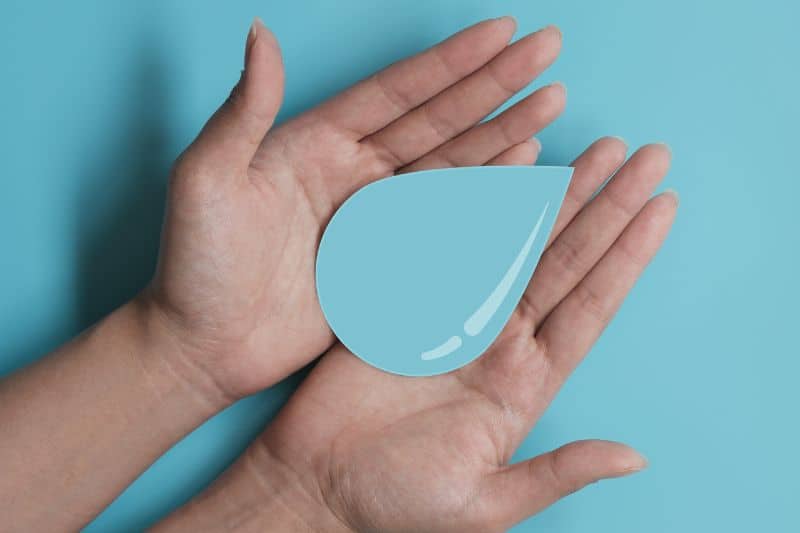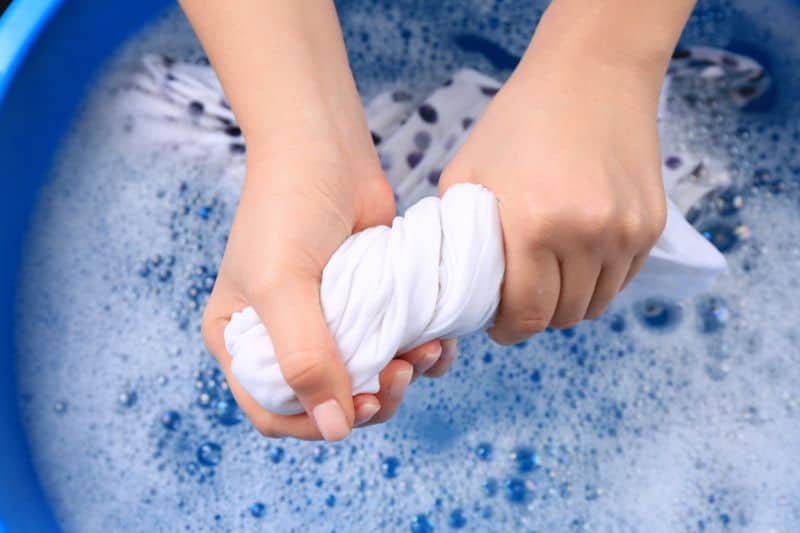Greywater is described as gently used wastewater that comes from sources such as the bathroom, kitchen, and laundry. It is relatively clean and cannot be compared with the water from toilets (blackwater).
Generally, any water drained from the house besides toilet water can be described as greywater. It may also contain traces of food, grease, hair, dirt, or particular household cleaning products.
As much as it may look dirty, greywater can be reused for other purposes and does not necessarily have to be disposed of into the sewage system as other types of wastewater do.
This means it is not wastewater but could be repurposed for safe and beneficial uses such as yard irrigation. It, therefore, serves to substitute fresh water for some purposes, thus allowing for water conservation and reducing the amount of water sent into the sewage system for treatment.

Different Ways to Collect Greywater
There are several ways used to collect greywater. Some of these ways include:
1. Manual Collection
Greywater is collected from laundry, kitchen, or bathwater. The systems for collecting greywater vary from manual to completely automated, with the manual systems being the simplest to use and the ones with the least maintenance costs.
The manual systems require nothing more than a bucket and jug for collecting greywater by hand. The water can then be used either for irrigation plants or as a substitute for fresh water for flushing.
2. Simple Piping
The second and more complex system creates an automated connection between the laundry and the landscape. This system uses plumbing connections between the washing machine’s wastewater drain pipe and the lawn. Here, the water flows via underground piping into the yard, where it is used to irrigate the land.
It has a low cost of materials and requires some maintenance to ensure the plumbing does not become clogged with residue from the soapy water. This system can be built with little effort and training, plus the materials required, such as hose pipes and connectors.
3. Integrated Sewage and Piping
The third system integrates the whole house’s plumbing into a greywater collection system. These systems are the most expensive and the most maintenance-intensive options available. They also require hiring professionals to ensure the work is done correctly.
The systems usually connect the bath, laundry, and kitchen drain to a system that dispenses greywater into a collection tank.
Due to the various sources of this water, it usually needs to be used within 24 hours of collection to prevent bacteria from growing to numbers that cause foul smells. The water can, however, be treated with chlorine or iodine to allow for longer storage.
Some systems can even allow for the merging of greywater to toilet plumbing, ensuring that one does not flush the toilet with fresh water. The systems can be further integrated to include greywater outlets that merge into the existing sewage systems to ensure no overflow.
Some systems can also come with an emergency shut-off switch to prevent backflow into the main freshwater piping in case of system failure. The amount of piping and pumping involved in these most complex systems makes them more susceptible to blocking due to residual soap. They, therefore, need more maintenance than other systems.
Benefits of Using Greywater
Some of the benefits that come with using grey water include the following:

1. Freshwater Conservation
The use of greywater reduces the amount of freshwater used in the household for other functions. You see, when you use greywater instead of freshwater, you reduce the amount of freshwater you use, helping in water conservation.
This is particularly important in regions experiencing dry climates or going through droughts.
2. Reduction of Water Wastage
Using fresh water for all the different functions in a house produces lots of wastewater that all ends up flowing into the sewer systems.
This creates unnecessary wastage. The amount of water wasted can be halved by reusing greywater for one other function before it is dumped into the sewage.
Thus, it means fewer resources can be diverted to sewage treatment and that the saving of even an extra liter of water that could have been used before its disposal increases as well, thus increasing water use efficiency.
3. Reduced Energy Consumption
With reduced freshwater demands for each household, there is reduced energy demand required to pump the water into the house.
Secondly, water reuse reduces the load that treatment centers have to handle in ensuring that it is purified thus reducing the total energy required by both water distribution and sewage purifying companies.
Reduced energy use means less electricity, and in turn, fossil fuel use is also cut down, eventually helping to reduce greenhouse gas emissions. It means energy can be diverted into other resource-intensive requirements or stored for later use.
4. Reduced Chemical Consumption
The reduction of water sent to sewage plants also leads to reduced levels in the amount of chemicals used in treating the water.
That’s because, with a smaller load, sewage treatment plants do not require as much use of chemicals. This reduction is beneficial to the environment as it reduces both the cost of sewage treatment and the demand for chemical products that benefit the environment.
It also reduces the chance of accidental dumping of chemical waste by sewage processing companies. Greywater use also reduces the need to fertilize the yards with chemical fertilizers due to the nutrients the water already contains.

5. Beautification of Landscapes
Using greywater to water yards provides an alternative water source for plants, especially in regions where plants lack it. Regions that use reclaimed greywater thus provide an alternative use for water that would have gone to waste.
Therefore, it creates beautiful landscapes as plants maintain greenness and bloom, even in regions where the climates are harsh. Coupled with other technologies, such as mulch and drip irrigation, the water provided can last longer to ensure the beautiful state of one’s yard is maintained even during the driest of seasons.
6. Reuse of Nutrients
Greywater reintroduces nutrients that would have otherwise been lost to the sewage system. The kitchen and bathwater contain a lot of organic material that is not harmful to plants.
In contrast, blackwater, although containing excessive levels of organic matter, may also have harmful bacteria, e.g., E. coli, that could cause disease if they contaminate the soil. The greywater provides plants with good nutrients that go towards increased beautification.
7. Organic Filtering of Water
The greywater used in watering plants is purified by plant and soil action, which negates the use of chemicals that might, in excess, harm the soil and the organisms that live within it. Organic filtering serves to ensure the environment’s safety.
8. Groundwater Recharge
The greywater used is often filtered by the soil as it moves down and ends up in the groundwater, replenishing the levels therein. This is a good thing as it ensures that waterways such as rivers sourcing water from underground aquifers are always fed.
How Does the Greywater System Works?
The process involves three steps, which include:
Collection of Greywater
The greywater can be collected from the sinks, baths, or washing machines using basins or through piping. The problem that occurs with this is the kinds of soaps used. Some soap has a harsh chemical that can damage the plumbing system over time. It is recommended that one uses organic soaps as they are less likely to cause harm.
Secondly, plumbing is recommended as it requires less maintenance and will not tire the individual as much as manual bucket collection. The system can also use pumps to transport the water to collection sites. This allows for the storage of wastewater while it is not in use.
The added challenge from this is the fact that the pumps may be affected by the chemicals within greywater over time.
Storage and Treatment
The water is usually collected in a storage container afterward. Storage is recommended for less than 24 hours to ensure bad smells do not accumulate.
Treating the water with chlorine or iodine is also recommended to ensure that the stored water does not produce a foul smell if the plan is to store the water for longer.
Use of Greywater
The greywater system should be connected most appropriately to ensure look-term use. It is best to have the system both flush toilets and pour into the yards. The water can be transported via gravity or pumps, but ideally, there should be a way to divert water into the usual sewage path if unnecessary.
Also, there should be an emergency cut off in case of failure of the system to prevent backflow of the greywater into freshwater systems. The greywater can also find use in any other non-contact way such as with washing garden tools and the driveway.
When used for gardening, the plants should not be acidophilic (plants that do well in acidic soils), as greywater is usually alkaline due to the soaps featured in it.






